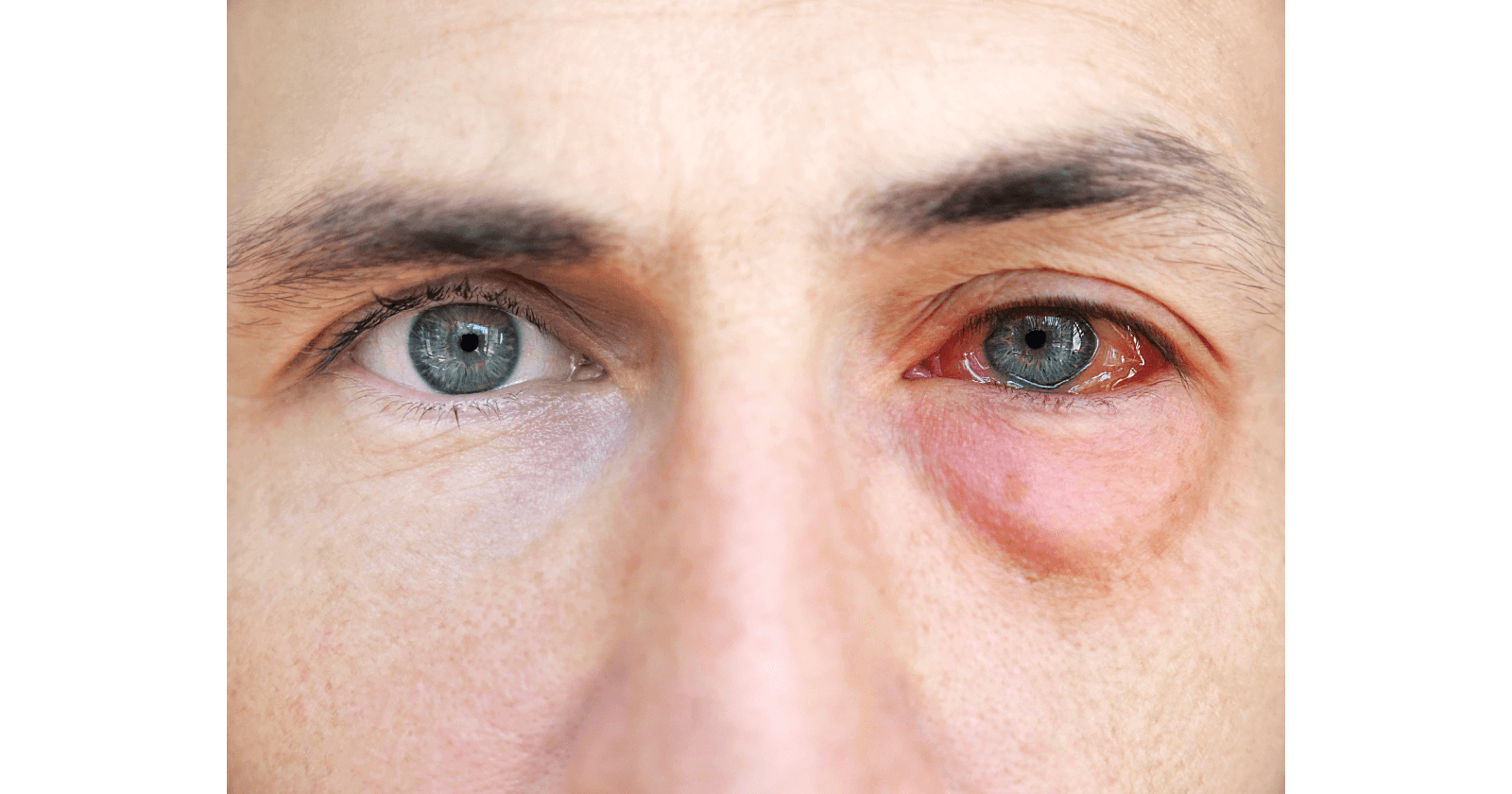
The constant irritation, the almost maddening itching, and the persistent feeling of grit beneath the eyelid that characterizes ocular allergy, or allergic conjunctivitis, is far more than a minor seasonal inconvenience; for many, it becomes a chronic condition that severely degrades focus, productivity, and general quality of life. The root cause is a hypersensitive immune system overreacting to ordinarily harmless airborne substances, ranging from pollen and mold spores to pet dander and dust mites. When these allergens make contact with the ocular surface, specialized cells in the eye, known as mast cells, promptly release histamine and a cascade of other inflammatory substances to initiate a defense response. This biochemical chain reaction is precisely what causes the classic and distressing symptoms: the characteristic redness, swelling, and excessive tearing or watering as the eyes attempt to flush out the irritant. Dealing effectively with this issue requires a layered, proactive strategy that extends beyond mere symptom suppression, prioritizing sustained environmental control and careful personal habits.
The classic and distressing symptoms: the characteristic redness, swelling, and excessive tearing or watering.
The single most impactful strategy for long-term eye allergy management is a rigorous commitment to allergen avoidance and precise environmental control, turning your living space into a protective sanctuary from the invisible irritants that instigate symptoms. For those susceptible to seasonal allergies, this means meticulously tracking pollen counts and adjusting outdoor exposure accordingly, generally by staying indoors when counts are highest, often during mid-morning and early evening hours. The crucial physical barrier to maintaining this control is keeping windows closed at all times, both at home and in the car, relying instead on air conditioning which, when fitted with a high-efficiency particulate (HEPA) filter, can actively cleanse the air of microscopic irritants before they reach the delicate ocular surface. For individuals whose triggers are perennial, such as dust mites or pet dander, the battle shifts indoors, demanding a comprehensive overhaul of the indoor landscape to remove these embedded reservoirs of allergens.
Turning your living space into a protective sanctuary from the invisible irritants that instigate symptoms.
For indoor allergens, especially the ubiquitous dust mites, the bedroom represents a critical area requiring stringent modification because of the extended period of daily exposure that occurs during sleep. Implementing allergy-proof covers for pillows, mattresses, and box springs forms a non-negotiable, physical shield against these microscopic triggers. Furthermore, bedding must be laundered frequently in hot water, specifically at temperatures of at least 130∘F, a heat level necessary to effectively kill dust mites and wash away accumulated dander. Beyond the bedding, the entire room must be assessed for materials that serve as allergen traps; consequently, individuals with significant dust mite or pet dander sensitivities might consider replacing carpets, heavy rugs, and drapes with smooth, easily cleaned flooring materials like hardwood or tile, and opting for blinds instead of curtains that harbor irritants. Maintaining the humidity level in the home between 30% and 50% is also vital, as lower humidity inhibits the growth of mold and dust mites.
The bedroom represents a critical area requiring stringent modification because of the extended period of daily exposure that occurs during sleep.
The daily habits we often perform unconsciously have a disproportionate impact on ocular comfort, with hand hygiene and avoiding physical irritation being fundamental pillars of non-pharmacological relief. The simple, almost involuntary act of rubbing the eyes, however tempting during a flare-up, is absolutely critical to avoid because it mechanically stimulates the mast cells, causing them to release even more histamine and dramatically worsening the vicious cycle of itching and inflammation. This friction can even lead to serious complications over time, such as corneal infections and the progression of conditions like keratoconus. Therefore, frequent hand washing, particularly after being outdoors, after petting an animal, or before touching the face for any reason, is essential to prevent the transfer of accumulated allergens from the hands directly onto the ocular surface. When cleaning is necessary, a damp rag or mop should always be favored over dry-dusting or sweeping, which only stirs up allergens into the air, creating a secondary exposure risk.
The almost involuntary act of rubbing the eyes, however tempting during a flare-up, is absolutely critical to avoid.
Beyond the macro-level environmental adjustments, immediate, targeted home-based supportive therapy can provide surprisingly rapid and substantial relief during acute symptom flare-ups, often acting as a necessary bridge while the long-term avoidance measures take effect. The most straightforward and universally recommended intervention is the application of a cool compress to the closed eyelids. The cooling effect produced by a clean cloth dampened with cold water or a commercial cooling pack works by inducing vasoconstriction, which reduces the blood flow and swelling in the conjunctival tissue, simultaneously providing a soothing, numbing sensation that immediately counters the persistent itch. These compresses should be applied for five to fifteen minutes, as needed, to calm the angry, irritated tissue. Additionally, using refrigerated artificial tears throughout the day provides a dual benefit: the liquid acts to physically flush out lingering allergens and inflammatory mediators from the ocular surface, while the chill further enhances the immediate soothing effect, working similarly to the cold compress.
The cooling effect produced by a clean cloth dampened with cold water or a commercial cooling pack works by inducing vasoconstriction.
The vast array of over-the-counter and prescription topical medications available for eye allergies specifically target the underlying biochemical cascade, offering highly effective relief that often works faster than oral antihistamines. These topical solutions are broadly categorized by their primary mechanism of action. Antihistamine drops act quickly to block the histamine receptors, rapidly reducing itching, redness, and tearing; they are an excellent option for immediate, as-needed relief. For individuals with more predictable or chronic symptoms, mast cell stabilizers are the prophylactic cornerstone; these drops prevent the mast cells from releasing histamine in the first place and are most effective when used regularly, before the anticipated allergen exposure, such as before the start of pollen season. Many modern treatments now utilize dual-action agents, which combine both an antihistamine for fast relief and a mast cell stabilizer for long-term prevention within a single drop, streamlining the treatment protocol and improving patient adherence to a more complex regimen.
Many modern treatments now utilize dual-action agents, which combine both an antihistamine for fast relief and a mast cell stabilizer for long-term prevention.
For contact lens wearers, the presence of the lens itself introduces a unique layer of complexity, as the lens surface can become a magnet and reservoir for allergens and environmental irritants, exacerbating symptoms even when other control measures are in place. The crucial recommendation during allergy season is often to switch to glasses entirely, providing a rest for the ocular surface and eliminating the lens as an allergen collection point. If continued lens wear is deemed absolutely necessary, transitioning to daily disposable contact lenses offers a significant advantage; by using a fresh, sterile lens each day and discarding it after a single use, the accumulation of proteins, debris, and, critically, allergens that can build up on reusable lenses is completely circumvented, thus minimizing the constant re-exposure and reducing the underlying inflammatory load on the eye. Beyond the lens itself, maintaining meticulous lens case hygiene and ensuring the proper use of preservative-free or non-irritating solutions becomes paramount.
The lens surface can become a magnet and reservoir for allergens and environmental irritants, exacerbating symptoms even when other control measures are in place.
For cases where the ocular allergy symptoms are severe, persistent, or accompanied by significant nasal and respiratory involvement, a consultation with an allergist or specialized eye doctor is essential to explore advanced treatments that move beyond standard topical drops. One such approach is allergen-specific immunotherapy, commonly known as allergy shots or, in some cases, sublingual tablets or drops. Immunotherapy is a causal treatment designed to fundamentally change the body’s immune response by gradually exposing it to increasing amounts of the specific allergen over time. This process systematically desensitizes the immune system, leading to long-term tolerance and a substantial reduction in both the severity and frequency of allergic symptoms affecting both the eyes and the respiratory system. In the most recalcitrant and severe cases of inflammation, the physician might also consider a carefully managed, short course of steroid eye drops, but their use requires strict professional supervision due to potential risks, such as elevated intraocular pressure.
Immunotherapy is a causal treatment designed to fundamentally change the body’s immune response by gradually exposing it to increasing amounts of the specific allergen over time.
The broader context of systemic health and lifestyle choices cannot be overlooked, as the body’s overall inflammatory status directly influences the severity of localized allergic responses in the eyes. Adopting an anti-inflammatory diet rich in omega-3 fatty acids—found in sources like fatty fish, walnuts, and flaxseed—and packed with antioxidants from a wide variety of fresh fruits and vegetables, can subtly yet profoundly enhance the body’s ability to combat inflammation. Furthermore, adequate hydration is crucial for maintaining the proper quality and quantity of tears, supporting the eye’s natural flushing mechanism. General health practices, such as ensuring sufficient sleep and engaging in regular physical exercise, also contribute to a robust immune system that is better equipped to manage and temper hypersensitive reactions. Smoking, or even exposure to secondhand smoke, is a powerful irritant that can significantly worsen ocular surface inflammation and should be rigorously avoided to support the eyes’ health.
Adopting an anti-inflammatory diet rich in omega-3 fatty acids and packed with antioxidants from a wide variety of fresh fruits and vegetables, can subtly yet profoundly enhance the body’s ability to combat inflammation.
When engaging in outdoor activities, especially during periods of high pollen or wind, simple physical barriers can provide an immediate and effective defense against the direct impact of airborne allergens on the eye’s surface. The consistent habit of wearing wraparound sunglasses or other protective eyewear acts as a literal shield, deflecting a significant portion of the environmental irritants and pollen before they have a chance to land on the conjunctiva and trigger a mast cell reaction. This practice is particularly vital for those who spend time cycling, running, or working outdoors. After returning indoors from any extended period outside, the simple routine of immediately washing the face and showering to remove pollen and other particulate matter trapped in the hair and on the skin is highly effective in preventing the passive transfer of these allergens to the eyes later on, particularly when preparing for sleep in the sanitized bedroom environment.
The consistent habit of wearing wraparound sunglasses or other protective eyewear acts as a literal shield, deflecting a significant portion of the environmental irritants.
Ultimately, the successful, long-term management of ocular allergies is less about finding a single ‘miracle cure’ and more about establishing a multi-faceted, daily regimen of proactive self-care and environmental vigilance. This comprehensive strategy weaves together allergen avoidance—meticulously cleaning and filtering the air and surfaces within the home—with the immediate relief provided by cold compresses and specialized drops, all while underpinned by systemic health choices. The distinction between seasonal and perennial triggers necessitates a continuous, personalized approach that evolves with the environment and the individual’s specific reactions. By adopting a mindset of constant, small adjustments and never underestimating the power of simple protective barriers and hygiene, individuals can move from merely reacting to symptoms to truly controlling their exposure and, consequently, their quality of life, transforming the chronic irritation into a manageable episodic annoyance.
The distinction between seasonal and perennial triggers necessitates a continuous, personalized approach that evolves with the environment and the individual’s specific reactions.
Beyond rapid relief drops, successfully calming chronic eye allergies demands a layered defense strategy of precise environmental control, relentless hygiene, and proactive self-care.
